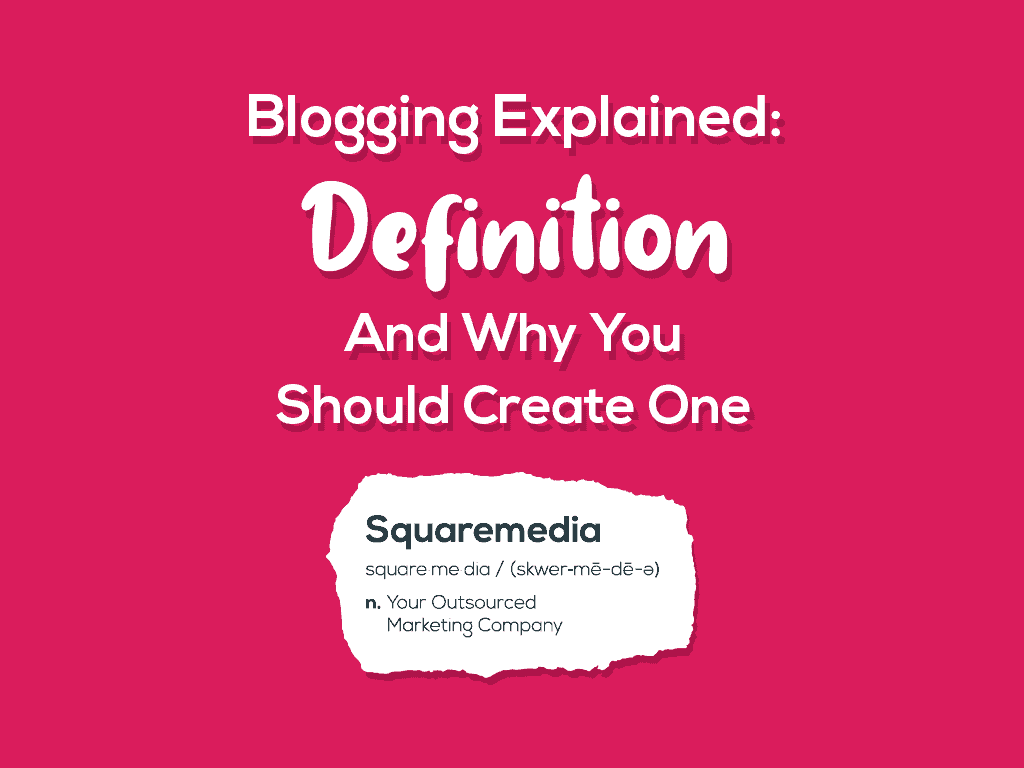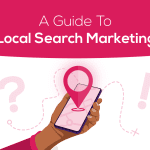
Blogging Explained: Definition And Why You Should Create One
What is a blog, does your company website really need one, and how can you get started? If you’re new to the world of blogging and need some convincing – or need to convince some of your stakeholders – read on to find out the basics of this very effective marketing strategy.
What is a blog?
A blog is an area of your website where you publish various articles, or “blog posts”. It will usually have a main page that displays all recent articles, and is also divided into several categories for easy organisation and navigation. Articles are displayed from most recent to oldest, and they often show the date of publication and the author. A company’s blog will be centred around their expert topic. If you want an example, you’re in one right now! This is a blog post on the Square Media website, and you can see the main blog listing page as well as the category this particular blog post sits under.
Why should you have a blog?
There are so many reasons why a blog can benefit your company, your customers and your digital marketing strategy:
- Writing blog posts positions you as an expert in your field. If a customer sees that you’re providing highly informative blog posts, this can instil trust and make them more likely to buy from you because you know all about your products or subject matter. Consider this: a customer searches for “which piano should I buy” and they click through to an article published by a musical instrument store. When they eventually do decide to buy a piano, they are more likely to buy from this extremely helpful and knowledgeable company than another one that doesn’t even have a blog or other way to offer customers advice online.
- It’s good for SEO. Every blog post you write is a new opportunity to target a keyword or phrase that may not already be on your website, giving you more visibility for those searches and introducing you to new customers. Plus, Google loves fresh new content. It can also help your SEO for main pages such as product pages if you implement some good internal linking to those pages from your blog posts.
- It shows your business is active. Ever gone to a website and wondered if they are still trading because none of their content has changed for a year, or because they stopped blogging two summers ago? Regularly updating your blog shows that you’re still in business and that the information on your website is up to date.
- It shows you’re keeping up with your industry. Blogging about recent or upcoming events, new product updates or other news within your industry is another way to show your business savvy and gain trust from your reader.
- It gives you something to share on social. And in emails, or anywhere else for that matter. Writing a new blog post and sharing it on social media or through email marketing is one way to attract people to your website and increase those visits – and hopefully conversions too, in the long run.
- It’s a way to increase your traffic and micro conversions. Whether through SEO, social, email or any other medium, blog posts can help get more eyes on your website. They can target people at any point in the sales funnel, whether they are just figuring out what they might need or ready to make a purchase. While blog posts are unlikely to convert users into customers on first visit, they may perform a micro-conversion such as signing up to a newsletter or following you on social media. Blog posts can’t be fairly held to the same goals as other pages such as product pages, but they have a huge part to play in the long term.
What are the characteristics of a good blog post?
Here are some quick tips to get you started with writing your first blog post:
Aim for a good word count
Aiming for over 500 words is a good rule of thumb, but it really varies – essentially, a blog post should be as long as it needs to be. If it’s a short introductory guide or a quick post about an upcoming event, perhaps it only needs to be 500 words. But if you’re writing a comprehensive guide that is much more in depth, something more like 1,500 is also great. If you’re coming out with double that, it may be time to think about splitting your blog post into a blog series or creating an ebook. So do try to get it to at least 500 words, but beyond that, don’t simply add words for the sake of it.
Put a date on it
Most blogs have a date on every article, but some don’t. This can cause problems if you’re writing time-sensitive content, for example involving events or sales. If there is no date on the blog post, a reader visiting several months later may not be able to tell if your sale has ended or the event has passed, so it’s good practise to put a date on each article, which is something that should happen for you automatically when you post each article.
Entertain, educate, inform or inspire
Consider the purpose of each blog post. Do you want your reader to buy your product, do you want to help them choose between two similar products, do you want to tell them about a new development in the industry that could affect how they do business? Your content should entertain, educate, inform or inspire your readers.
Write for humans first
If you’re optimising your blog posts for search, you may be tempted to pepper your content with keywords, but beware of keyword stuffing. In fact, don’t worry about SEO at all until you’ve already written a first draft. Chances are, your article already includes keywords your customers are searching for without you needing to change much. SEO has changed over the years and right now the best thing to do is write for humans first – that means no keyword stuffing or awkwardly-worded sentences.
If you would like any help with your content, blogging or SEO, we’re here to help – whether you’re just creating your company blog or you’ve been hammering away at the keyboard for years. Get in touch!

